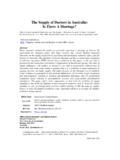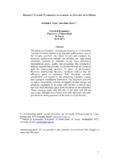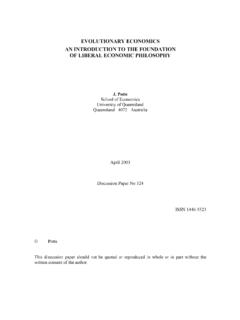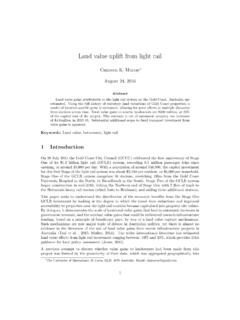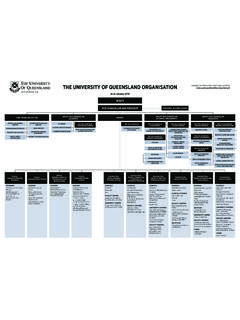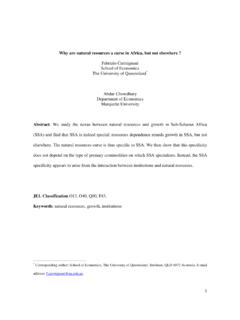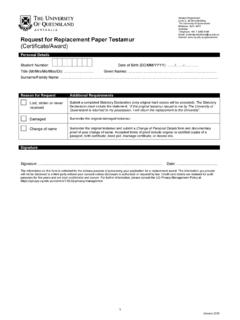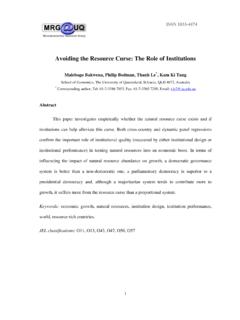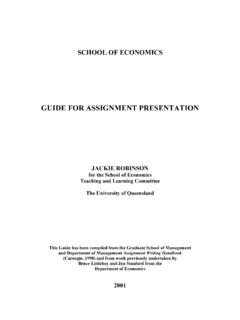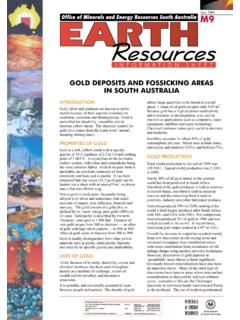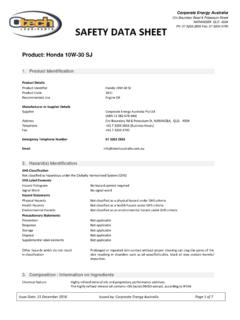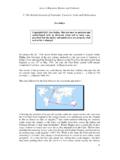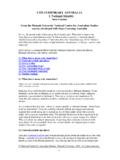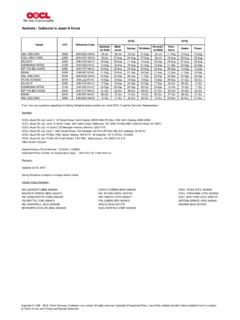Transcription of A REVIEW OF AUSTRALIA’S COMPULSORY …
1 A REVIEW OF australia S COMPULSORY SUPERANNUATION SCHEME AFTER A DECADE Dr Michael E. Drew ASIA School of Economics and Finance Queensland University of Technology Brisbane 4001 australia Dr Jon D. Stanford FSIA School of Economics University of Queensland Queensland 4072 australia Email: Tel: (07) 3365 6594 Fax: (07) 3365 7229 March 2003 Discussion Paper No 322 ISSN 1446-5523 Drew & J Stanford This discussion paper should not be quoted or reproduced in whole or in part without the written consent of the author. Corresponding Author. 2 1. INTRODUCTION The following REVIEW of australia s retirement savings system takes 1992 as the beginning of COMPULSORY mass superannuation in australia with the introduction of the Superannuation Guarantee (SG).
2 Today, in 2002, the SG has reached its maximum levy of nine per cent of salary for most employees. While our REVIEW necessarily considers issues of national economic policy and of aggregation, our central concern is that of those individual members of a superannuation fund, and that of how such members can maximise their retirement benefit. Our perspective is that of financial economists; we apply standard finance technology to evaluate the performance of superannuation funds and the markets in which they operate in order to come to a view as to whether the superannuation industry is efficient. The Australian superannuation system places trustees in the key role of managing superannuation assets and we subject the role of trustee to close scrutiny while identifying the very substantial principal-and-agent problems that exist in the industry.
3 We consider two policy issues: member choice of fund and portability of accumulated balances in the light of how they would improve the ability of individual members to maximise retirement benefits and the efficiency of the system. We argue that the award superannuation scheme which requires, by conditions in industrial awards, contributions of three per cent of wage or salary of an employee continues along side the SG scheme is due for REVIEW . While there is an extensive literature on taxation of superannuation funds, we do not consider this issue except to note that taxation concession to superannuation are substantial and are projected to be of the order of $ billion in 2002-3 (Department of Finance and Administration 2002). 2. THE OLD SUPERANNUATION SYSTEM The old system, the system that prevailed before the introduction of COMPULSORY superannuation initiatives in the late 1980s and early 1990s, was predominately a defined benefit system restricted to public sector employees and managerial employees of the private sector.
4 Much of the system, particularly in respect of the Commonwealth government, was unfunded and retirement benefit were meet on an emerging cost basis. That other schemes may have been unfunded was not a problem in the face of poor preservation and vesting requirements. Some evidence on the extent of vesting in 1984 is shown in Table 1. Table 1: Percentage of Members of Private Sector Life Administered Employee Funds Resignation Retrenchment Dismissal Early Retirement Own Contributions or less Own contributions plus interest Own contributions plus interest and partial vesting Full vesting Source.
5 Australian Bureau of Statistics, 1988, Superannuation Funds australia 1984-5, Catalogue No. Generally the incidence of complete vesting was low and preservation requirement were not Other parts of the system were run through life 1 For a detailed discussion on the history of superannuation see Robinson (1992) and the Insurance and Superannuation Commission (1995, 1996). 3 2A. COVERAGE OF THE OLD SCHEME The proportion of employees covered by superannuation under the old scheme was relatively low especially for part-time workers. In 1988, 58 per cent of full time employers, 19 per cent of part-time workers and only 2 per cent of persons not employed were covered by a superannuation scheme (ABS 1988). As illustrated below, coverage varied widely over the industry groups.
6 Figure 1: Superannuation Coverage by Industry, australia , 1988. Agriculture Mining Manufacturing Electricity Construction Wholesale and Retail Trade Transport and Storage Communication Finance, property and Business Services Public Admin and Defence Community Services Recreation All Industries Source: ABS Per cent % Males % Females Moreover, the introduction of award superannuation had a greater impact in the private sector as shown in Table 2. Table 2: Type of Superannuation Coverage, australia , 1988, Per Cent of Employees Provider Public Sector Private Sector Total Current Employer In conjunction with a union Not in conjunction with a union Privately arranged Total Source: ABS 1988 2 For example, some Australian universities adopted superannuation schemes which were operated by the purchase of life insurance policies that matured on the retirement age of the employee.
7 There are some remnants of these schemes still in existence. 4 2B. REASONS FOR CHANGE Dawkins (1992) explained that the new Superannuation Guarantee (SG) was introduced to meet the urgent need for much greater self-provision for retirement income through COMPULSORY superannuation contributions and that there was a need to strengthen australia s national saving Greater domestic saving will relax the current account constraint on australia s economic performance. It will mean that we can grow faster without relying so heavily on foreign saving and building up an unsustainable foreign debt. Implementation of the SG was projected to increase national saving by about seven-tenths of one per cent of GDP by the year 2005, and by one-and-one-quarter percentage points of GDP within forty years (Dawkins 1992).
8 The Department of Finance and Administration (2002) claims that the key objectives of COMPULSORY superannuation when introduced in 1992-3 were greater private sector provision for retirement and to assist lower income workers to live better in retirement through a combination of the age pension supplemented with tax assisted superannuation. Howe (1989) claimed that the SGC initiative is directed at swelling the pool of private savings potentially available to fund retirement. Important associated aspects of the new policy with the SG were the strengthening of the current preservation requirements and a phased increase in the preservation age. The government s preferred position was for a total contribution of 12 per cent comprising an ultimate 9 per cent of salary and a 3 per cent contribution by employees.
9 The prescribed schedule of SGC contributions is shown in Table 3. Table 3: Prescribed SGC Contributions, 1992-2003 Employer s Payroll $1 million or less Per Cent Employer s Payroll More than $1 million Per Cent July 1, 92 to Dec 31, 1992 3 4 July 1, 93 to June 30, 1993 3 5 1993-4 3 5 1994-5 4 5 1995-6 5 6 1996-7 6 6 1997-8
10 6 6 1998-9 7 7 1999-00 7 7 2000-01 8 8 2001-02 8 8 2002-03 9 9 Source: Howe (1989) 2C.
